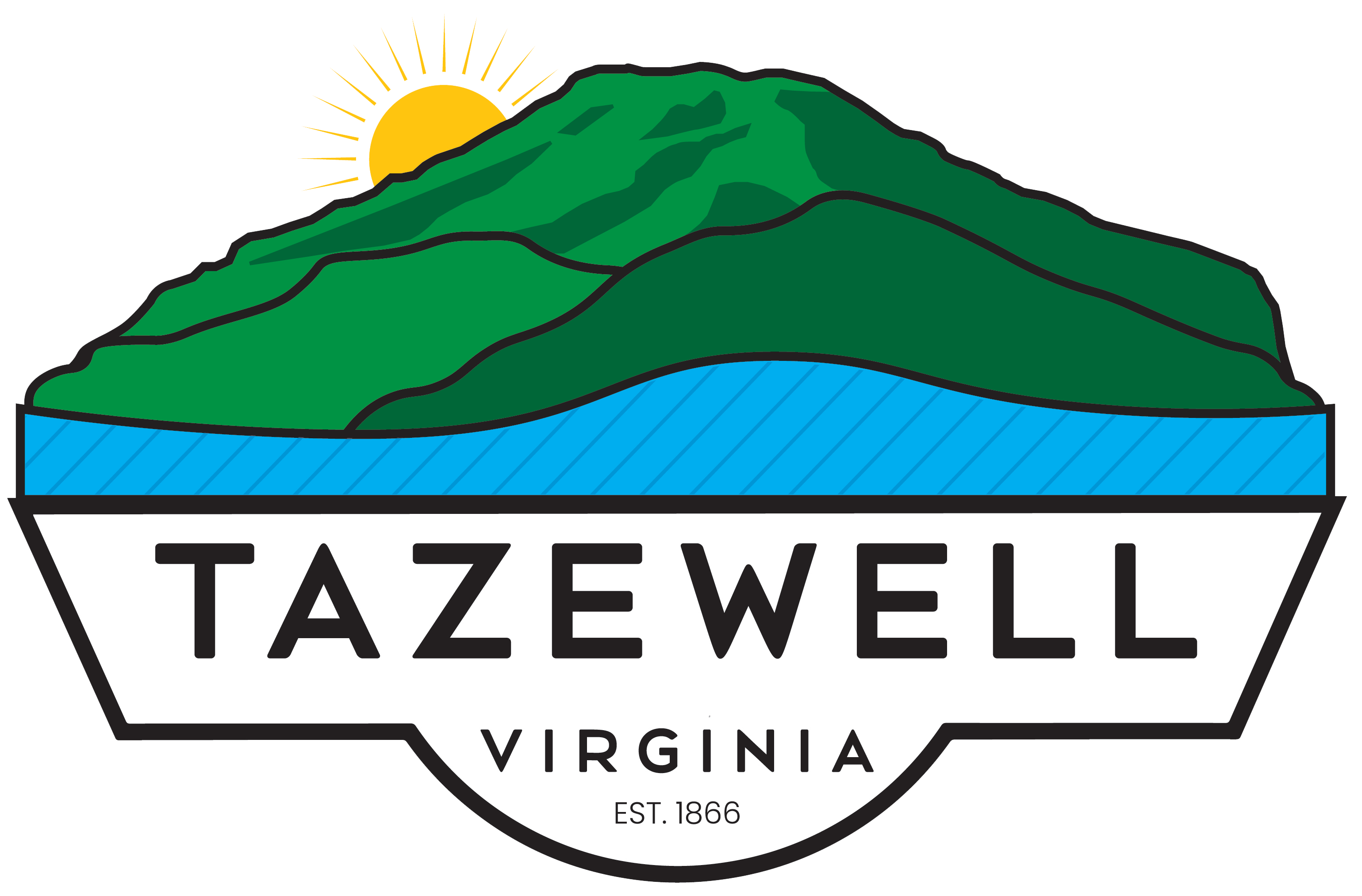History
[wptabs]
[wptabtitle]Timeline[/wptabtitle] [wptabcontent]
1769
Tazewell County settled by Thomas Witten, John Greenup and others.
1773
What is now the Town of Tazewell settled by William Peery and Samuel Ferguson.
1799
On December 20, 1799, the General Assembly of Virginia created Tazewell County from portions of Wythe and Russell Counties.
1800
Jeffersonville was established as the county seat of the new county on land given by William Peery. The county’s first community was named in honor of Thomas Jefferson who was elected as our country’s third President that same year.
1866
The Town of Jeffersonville was incorporated for the first time by the Virginia General Assembly.
1892
On February 29, 1892, the town of Jeffersonville was renamed Tazewell. Jeffersonville was often referred to as Tazewell Court House even prior to this date.
Also in 1892 the first street cars were used in the town. The original trolley was pulled by a horse or a mule until upgraded to electrical cars in 1904. The Town of Tazewell was noted, at that time, as the smallest town in America with an electric street car.
1933
Due to the advent of the automobile, the Tazewell trolley was discontinued in September of 1933.
1963
The Town of Tazewell and the Town of North Tazewell merged on January 1, 1963. The expanded town also annexed the communities of both River Jack and Four Way.
1974
The Tazewell Train Station on the Clinch Valley Line of the Norfolk and Western Railway closed heralding an end to this community serving as the commercial hub of the town.
2010
Boundary adjustments expanded the area of the town to include many sections of the US 19-460 Bypass, the Tazewell Middle School, and the Four Seasons YMCA. The population of the town topped 6,000 due to the expanded boundaries.
(Courtesy of the Tazewell County Historical Society & Dr. Terry W. Mullins)
[/wptabcontent]
[wptabtitle]History[/wptabtitle]
[wptabcontent]
| Exploration of the area known today as Tazewell is traced to the first groups of long hunters exploring Southwest Virginia from eastern Virginia in the early 1700s. In fact, before any actual settlement many trappers and hunters camped on the Clinch River. Indian traders were familiar with Tazewell’s topography and had even given the river its first name, the Pellissippi. Such adventurers cannot, however, in any sense be claimed as actual settlers. It was, nevertheless, in 1769 that a small group of settlers including Thomas Witten, his son-in-law, John Greenup, and other family members established the first permanent settlement by white pioneers at the Crab Orchard Tract on the Clinch River at Pisgah. This was the same site that had been a permanent settlement for the Woodland Indians as early as two hundred years before. The population of this mountain and valley community grew slowly but steadily during the eighteenth century. As a result, a new county was proposed in the heart of the Southern Appalachians to be created from portions of Russell and Wythe Counties. That new county, Tazewell, was created by the Virginia General Assembly on December 20, 1799. |
| The town of Tazewell is a picturesque community that was established to serve as the county seat for Tazewell County the following year. One of the oldest communities in Southwestern Virginia, Tazewell was first named Jeffersonville in honor of Thomas Jefferson who received every local vote cast when he was elected as President in 1800—the same year the town was established. Jeffersonville secured its first charter as an incorporated municipality in 1866—just after the Civil War. Tazewell and its neighboring town, North Tazewell, merged in 1963. At that same time the communities of Riverjack and Four Way were annexed into the expansive new town boundaries. The first recorded mayor of Tazewell was A. G. May in 1874. The first mayor of North Tazewell was William L. Britts in 1894. James W. Harman, Jr. served as the first mayor of the merged municipality beginning in 1963. During the two decades history of the town of Tazewell the population increased, transportation improved, streets were paved, sewers and electricity were added, and more houses and businesses were built. New communities grew up in and around the town. One of the first additions was the Tazewell Improvement Company’s street of “new” residences today known as Tazewell Avenue. Kelly grew up on the Clinch and with the advent of the railroad and the train station became North Tazewell and the commercial center of the Tazewell area. New Town and Riverjack were later additions to the North Tazewell community. Meanwhile, to the east of town, the Burkes Garden Siding addition grew up along the Clinch at the point where the railroad came closest to the farm rich valley of Burkes Garden. This section would become a commercial center in its own right in late twentieth century Tazewell and gain the new name—the Four Way section. Today the town of Tazewell is home to more than 6,000 residents. Tazewell is also the governmental seat to a county of more than 45,000 people. Located at the headwaters of the Clinch River, the springs of Tazewell eventually became part of the Tennessee, Ohio and finally Mississippi Rivers. Tazewell today is an energetic and vibrant community, proud of it heritage and excited about its future. The community is rich in a history that is matched only by its natural beauty. The hills of Tazewell with their myriad of seasonal colors and the beauty of the Clinch River Valley make Tazewell a truly beautiful place to live or visit. (Used by Permission of Louise B. Leslie and Dr. Terry W. Mullins, and taken from Arcadia Publisher’s Images of America: Tazewell) |
[/wptabcontent]
[/wptabs]


